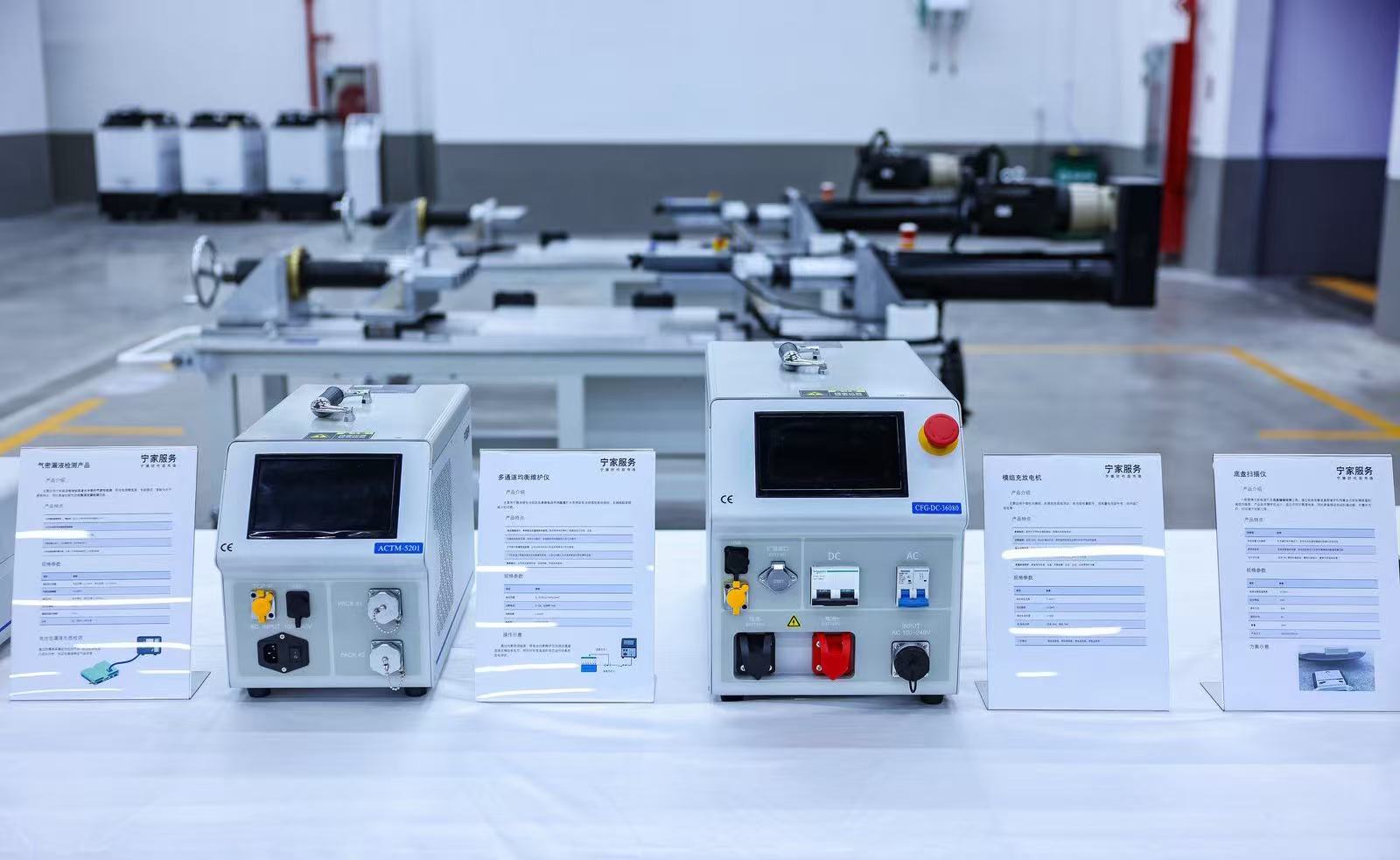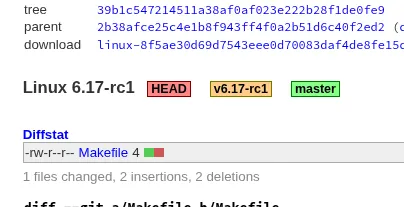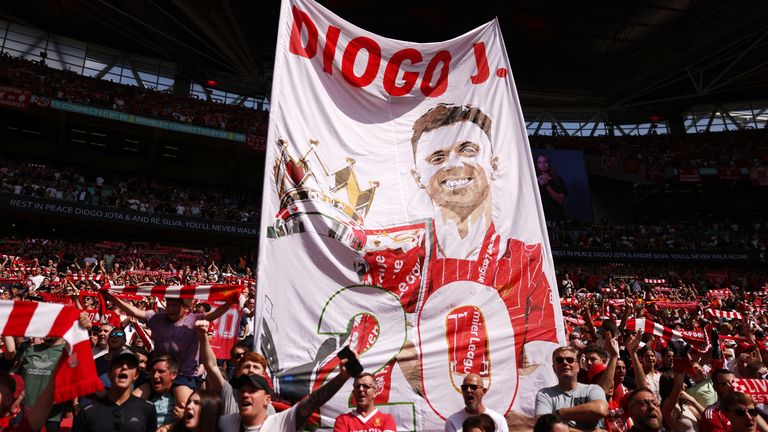- Opelka snaps losing run against De Minaur, advances in Cincinnati ATP Tour
- Alex De Minaur vs. Reilly Opelka: Predictions, Where to Watch Globely News
- ATP Cincinnati Best Bets Including Opelka vs Dellien Last Word On Sports
- So easy a caveman can do it? Riley Opelka advances at Cincinnati Open Yahoo Sports
- de Minaur vs. Opelka Prediction at the Western & Southern Open – Sunday, August 10 Bleacher Nation
Blog
-
Opelka snaps losing run against De Minaur, advances in Cincinnati – ATP Tour
-

China and America in a stablecoin race that could reshape global finance
Stablecoins have opened a new field in the rivalry between China and the United States. This is a type of cryptocurrency that can maintain a fixed value by being pegged to other assets such as Bitcoin, or the US dollar, or the Chinese renminbi.
In Hong Kong and Washington, bills to regulate stablecoins have recently become law. Hong Kong is attempting to reestablish a position in the global financial world by setting up an economic hub for stablecoins and other ventures in what is known as “Web3”, the next generation of the internet based on decentralisation and blockchain technology. Meanwhile the Trump administration is heavily involved with cryptocurrencies, bolstered by the support of “crypto bros” who funded President Donald Trump’s campaign.
Stablecoins could have far reaching consequences for the two economies, while also reshaping global finance.
Hong Kong as stablecoin base
The Stablecoins Bill, passed by the Hong Kong Legislative Council in May, is a comprehensive regulatory framework designed to regulate stablecoins that are pegged to traditional currencies. The Hong Kong stablecoin bill adds to Beijing’s efforts to create an alternative to the US-dominated economic order. Alongside the Cross-Border Interbank Payment System (CIPS), plans for BRICS Pay, the digital renminbi and the growing use of the renminbi for international transactions, Hong Kong stablecoins present another avenue for China to conduct international trade outside of the dominance of the US dollar.
Promoters of cryptocurrency have long been convinced of its capacity to change the world.
China appears keen to keep government-backed stablecoins in Hong Kong, while ensuring that stablecoins and other cryptocurrencies are kept outside of the mainland. Although not officially banned by the central government, Stablecoins and cryptocurrencies such as Bitcoin are heavily restricted in mainland China. Beijing plans to ensure central financial control for digital currency, urging its citizens to use the digital renminbi instead of decentralised digital assets.
But Hong Kong has been allowed to enter the stablecoin market. After the 2019 protests and the Covid-19 pandemic, the Chinese government has been intent on restoring Hong Kong’s place as a global financial hub. The stablecoins bill is a part of that effort to entice foreign banking organisations to return to Hong Kong. The city will once again become another gateway for China, this time for Web3 and cryptocurrencies. While within the mainland crypto will remain suppressed, it will likely bloom in Hong Kong, allowing China to trade with them internationally. Domestic markets will be free from its volatility and anarchic nature.
Cryptocurrency might not be physical but has real world effects (Jonathan Raa/NurPhoto via Getty Images) America: The land of crypto
Last month, Trump signed the Guiding and Establishing National Innovation for US Stablecoins Act (GENIUS Act) into law. This bill similarly aims to create a “comprehensive regulatory framework” for stablecoins. It requires stablecoins to be pegged to the US dollar or other low risk assets, to be registered with regulators, and ensure that they meet audit requirements. The GENIUS act seeks to maintain the supremacy of the US dollar in the ever-growing world of digital payments. Stablecoins are seen as more than just an investment but as a form of payment, with those pegged to the US dollar already rising in use, even in China’s fintech sector.
The question, however, is how much the US tilt to stablecoins can truly be seen as the American government advancing the interests of the country versus how much of it is about advancing the interests of Trump and his close allies? A pillar of Trump’s support in his 2024 campaign was the “crypto-bros,” tech investors and executives with portfolios heavily based on cryptocurrencies and their connecting technologies. These figures, including Elon Musk, supported Donald Trump on the hope that he would in turn pass favourable legislation. The GENIUS act sees those hopes coming to fruition.
Trump’s actions have fostered doubts. His “$Trump” meme coin, launched three days before his inauguration, rose some 300% over the initial price, before dropping by half. The people behind the $trump coin (including Trump) reportedly made an estimated US$100 million in trading fees. It appeared to be a rug pull, where developers of a coin abandon the coin after making initial profits, leaving buyers with a useless asset. The GENIUS Act could see such schemes proliferate.
Promoters of cryptocurrency have long been convinced of its capacity to change the world. As the new forms of digital currency become more like real world currency, with underlying regulations and stability, its integration into the global financial order will increase. Stablecoins are another step. But the dangers of crypto remain.
Continue Reading
-

Diogo Jota tribute cut short ahead of Liverpool’s Community Shield match with Crystal Palace | Football News
A minute’s silence held in tribute to Diogo Jota and his brother Andre Silva was interrupted by a minority of Crystal Palace fans before being cut short ahead the Community Shield against Liverpool.
Reds forward Jota died in a car crash along with his brother Silva in Spain in July.
The moment of silence at Wembley was disturbed by a minority of fans from the Palace end, eliciting a strong response at the other end of the pitch, as well as other Palace supporters, who tried to silence those not respecting the tribute.
Referee Chris Kavanagh opted to cut the minute short, with the tribute ending after just 20 seconds.
Liverpool fans also booed the national anthem ahead of kick off.
Sky Sports‘ Peter Smith at Wembley reported: “Unsavoury moments there, as a few Crystal Palace fans called out ‘Eagles’ during the minute’s silence for Diogo Jota, which drew boos from the Liverpool end.
“It followed Liverpool fans booing the national anthem, which drew an angry response from some in the Palace end.”
Liverpool boss Arne Slot said of the incident: “I’m a positive person. If I look at the respect that’s been paid to them both from around the world, that’s what I have in my head.
“I don’t think this was planned or this was the idea of the fan who made some noise, maybe he wasn’t aware it was the minute of silence. Then the fans of Palace were trying to calm that person down, but that was a bit noisy as well and then our fans reacted on what’s happening.
“I don’t think there’s a bad intention to it.”
Sky Sports News has contacted Crystal Palace for comment.
Before kick off, Liverpool supporters paid respect with a rousing rendition of ‘You’ll Never Walk Alone’ as the wreaths were brought out, raising a white banner reading ‘Diogo J’ and featuring the forward’s image and number 20.
Liverpool great Ian Rush, Palace chairman Steve Parish and Football Association chair Debbie Hewitt laid the wreaths in the Liverpool end as fans from both clubs expressed their respect with a standing ovation as the late siblings’ images were displayed on the big screens inside the stadium.
After the game ended 2-2, Palace won the Community Shield by beating Liverpool on penalties.
Slot’s praise for Liverpool players after Jota death
Liverpool boss Slot said on Thursday he was immensely proud of how his Premier League champions had dealt with the tragedy.
He said: “This summer has been a difficult for everybody connected with the club. The passing of Diogo Jota had a big impact on all of us and is something that we are still coming to terms with.
“We cannot imagine the pain that Diogo’s family, his wife, children and friends are going through, and the club will continue to give them all the support they can going forward.
“Diogo’s passing has had a big impact on us all, but what has been so important has been the love and care shown from the football world, and in particular of course the Liverpool FC community.
“I also want to mention the strength and the courage of my players here. They have found themselves in one of the toughest positions imaginable, but the way they have come together and the way they have conducted themselves, on and off the pitch, is a credit to them and to this football club.
“We really couldn’t have asked more of the boys and I am extremely proud of them all.
“We will always carry Diogo with us in our hearts, in our thoughts, wherever we go.”
Continue Reading
-

NING Service Experience Centers Launch in Shanghai and Bangkok, Setting a New Benchmark for the NEV Aftermarket
On August 10th, NING Service, an independent aftermarket brand under CATL, celebrated its first anniversary alongside the 10th anniversary of CATL’s after-sales business. The NING Service Brand Day themed “Now Action” was officially launched, with the flagship experience center in Shanghai and the first overseas directly-operated store in Bangkok, Thailand, opening on the same day. Leveraging its continuous innovation in battery maintenance technology, a globally leading service network and talent system, and a full battery lifecycle ecosystem, NING Service addresses the pain points of new energy vehicle consumers, leading the new energy vehicle aftermarket into a new phase.
A Decade of Dedication: Building a Robust Triangle of Service-Talent-Standard
“As the global energy structure transition accelerates, China’s new energy industry has entered a critical turning point for large-scale development. In NEV industry, existing service systems struggle to meet new demands such as testing of the battery system, electric drive and power electronics, as well as the battery health assessment. As a pioneer in the field of new energy services, NING Service always places customer needs at the forefront, driven by technological innovation and aiming for win-win cooperation to promote high-quality development in the new energy aftermarket,” said Li Wei, President of CATL’s Aftermarket Business Department.
Originally established in 2015 as CATL’s After-Market Business Department, NING Service officially upgraded to an independent brand in 2024. Leveraging CATL’s globally leading expertise in power battery technology, NING Service provides comprehensive chain services including battery inspection, maintenance, and recycling through directly-operated experience centers, authorized service providers, and a global service network for both enterprises and consumers. After ten years of efforts, NING Service has built a robust presence across 75 countries, operating more than 1,100 service outlets and managing 67 spare parts warehouses with a total area exceeding 370,000 square meters.

Building on 24 various industry standards led or involved by CATL’s after-sales team, and supported by self-developed service systems covering passenger vehicles, commercial vehicles, energy storage product lines and 6 major application scenarios, NING Service has fulfilled the promise of “general faults repaired within 8 hours, complex faults within 72 hours”, firmly holding the top position in the industry. Globally, CATL’s overseas service network has achieved 24-Hour response, ensuring seamless service experience for global customers.
Furthermore, NING Service collaborates with partners to establish professional new energy detection and repair training bases across 18 provinces and municipalities in China, addressing the growing demand for skilled professionals in the national new energy aftermarket. It has cultivated over 8,600 industry specialists, building a complete talent ecosystem encompassing talent supply, cultivation, and management layout, continuously injecting fresh blood into the industry.
Breaking Technical Barriers: Ending the “Replace-Only, No Repair” Maintenance Dilemma
While bottom-impact incidents involving battery packs in new energy vehicles are relatively uncommon, they often result in severe damage requiring full pack replacement- a costly repair. Additionally, third-party repair processes pose safety risks, making it difficult to ensure vehicle and user safety. To address this issue, NING Service has innovatively launched its CTP repair service. Utilizing CATL original equipment components, the service strictly adheres to CATL’s technical standards and quality requirements and comes with official warranty coverage, ensuring safe and reliable repairs. The repair service is significantly more affordable than full pack replacement, saving substantial repair costs for users and breaking the industry’s “replace-only, no repair” deadlock for CTP batteries.

During the battery pack repair process, NING Service consistently upholds standardized operating protocols – conducting repairs in a professional and dust-free environment with constant temperature and humidity while rigorously following the original equipment manufacturer’s meticulous inspection and repair procedures. This stringent system precisely ensures the reliability of cell-level repairs, effectively eliminating the risk of secondary damage caused by improper handling or substandard parts, thereby safeguarding battery performance and safety at their core.

Additionally, to further enhance service professionalism and safety, NING Service has independently developed a non-destructive testing device. This device can complete fault detection in just 15 minutes, achieving an accuracy rate of over 90%. Utilizing ultrasonic guided wave technology, the device enables precise internal damage detection without the need to disassemble the battery pack, effectively avoiding secondary damage that could result from disassembly and inspection. This not only ensures battery safety and longevity but also saves time and repair costs for users. The non-destructive testing device is expected to be officially launched by the end of this year.
Leveraging the triple advantages of OEM’s technology, genuine parts assurance, and authoritative certification, NING Service has successfully overcome the industry-wide challenges of “difficult and expensive battery pack repairs”, providing customers with professional solutions that are both reliable and cost-effective.
Closed-Loop Ecosystem: Comprehensive Management Across the Battery’s Full Lifecycle
NING Service is committed to providing new energy users with services that span the entire lifecycle of a battery – “from production and usage to recycling and regeneration”. By integrating a professional battery health assessment system comprising 45 online analyses and 28 offline inspections, NING Service delivers authoritative battery testing and maintenance, helping users promptly identify potential risks, extend battery lifespan, and simultaneously enhance transparency and residual value in the used vehicle market. At the same time, leveraging the globally leading circular supply chain of Brunp Recycling, a CATL subsidiary, NING Service has established a “72-Hour Express Recycling” network, achieving triple the regional coverage rate of third-party platforms. By establishing an efficient green recycling supply chain, NING Service actively fulfills its commitment to sustainable development.
In the future, consumers will be able to easily complete the recycling of retired batteries through NING Service’s platform. Recovered batteries will undergo strict screening and classification, followed by tailored processing based on their condition and performance – either repaired and remanufactured, cascade utilized, or broken down for reusable raw materials. Through this model, NING Service not only provides consumers with a convenient recycling channel but also maximizes battery lifecycle extension and minimizes resource waste.

Moreover, adhering to the philosophy of “co-creation”, NING Service collaborates with high-quality industry partners to expand into diversified business areas such as electric vessel operations and the low-altitude economy. This collaborative approach extends the boundaries of service offerings and creates new growth opportunities. Through an open partnership model, NING Service not only drives its own sustainable business growth but also injects fresh vitality into the broader new energy industry.

As a key strategic move by CATL in the aftermarket services sector, NING Service not only provides vehicle owners with superior technical support but also sets a new benchmark for the new energy industry through its closed-loop ecosystem approach. Currently, NING Service’s flagship experience centers have been established in seven domestic cities in China, including Wuhan and Guangzhou. The store in Bangkok, Thailand, spanning over 2000 square meters and integrating CATL’s global service standards, marks its first overseas location and serves as a crucial step for CATL’s global technology deployment and service coordination. Looking ahead, NING Service will continue to drive innovation in maintenance technology, service models, and network expansion, injecting new momentum into the healthy, stable, and orderly development of the new energy vehicle aftermarket.
Continue Reading
-

Will Lionel Messi play tonight for Inter Miami vs Orlando City in MLS?
The Herons are fifth in the Eastern Conference MLS table.
Javier Mascherano’s team will be eager to make up for their humiliating 3-0 home loss in the reverse fixture match back in May, which has left Inter Miami hungry for vengeance as they head to Spectrum Stadium.
The Herons are still positioned as serious title candidates even though they linger in fifth spot in the Eastern Conference table. They currently hold a four-game advantage with 42 points from 22 games.
Luis Suarez has shown the tenacity and clinical touch that characterised his best play, and Rodrigo De Paul, who recently joined in the summer, has started to take charge in midfield with more authority.
Suarez and De Paul both played important roles in their 3-1 Leagues Cup victory over Pumas UNAM in the middle of the week.
Inter Miami demonstrated their adaptability and ability to perform even without Messi, goalkeeper Drake Callender, and internationals Segovia Perez, Picault, and Benjamin Cremaschi.
Will Lionel Messi play tonight?
Luis Suarez will have to keep things rolling during the absence of Messi (Photo via Getty Images) In the Florida derby versus Orlando City, Lionel Messi will not be participating. Despite rumours of it being only a minor muscle strain, all the evidence suggests that Javier Mascherano and the Inter Miami staff of coaches have a far more planned reason for this absence.
The Argentine coach was clear:
“Leo is fine. Obviously, it would be crazy to take any risks by taking him to Orlando tomorrow, given everything that lies ahead. But we are very optimistic that he will be back with us soon.”
Messi’s physical ordeal started on August 2 when he requested to be substituted early in the Leagues Cup match against Necaxa. His right leg has a small muscular strain, according to the official diagnosis.
He has since missed Inter Miami’s 3-1 victory over Pumas UNAM, which guaranteed them a spot in the Leagues Cup quarterfinals to play Tigres UANL.
Will Messi play tonight?
He won’t play tonight due to an injury.
What injury has Messi suffered?
He has a minor muscle strain.
When did Messi last appear for Inter Miami?
He last played for Inter Miami when they faced Necaxa on August 2.
For more updates, follow Khel Now on Facebook, Twitter, and Instagram; download the Khel Now Android App or IOS App and join our community on Telegram.
Continue Reading
-

Kojima Productions’ OD is Still in Development, Microsoft Confirms
Over a month later, the impact of Microsoft’s mass layoffs, affecting Undead Labs, Turn 10 Studios, and many more, can still be felt. Avalanche’s Contraband has ceased active development four years after its announcement, and alleged departures on the Xbox publishing side have created concern over future collaborations.
However, as confirmed by a Microsoft spokesperson speaking to Bloomberg’s Jason Schreier, Kojima Productions’ OD is still in the works. It follows a report by Windows Central’s Jez Corden about the project being safe following the layoffs.
Plans can always change, but the studio continues to work on the psychological horror title. Director Hideo Kojima is focusing on building Physint, which remains in the conceptual stages, but he has mentioned how OD will be “totally different” and divisive.
Announced in 2022, OD stars Sophia Lillis (It and It: Chapter Two), Hunter Schafer (Euphoria), and Udo Kier (Melancholia, Halloween). Jordan Peele is also on board as a writer alongside Kojima. A release date remains unconfirmed, so stay tuned for more updates.
Continue Reading
-

Linux 6.17-rc1 Released With Many New Features But No Bcachefs Changes
Linus Torvalds just released the Linux 6.17-rc1 kernel a few hours ahead of his typical release regiment due to currently being in Europe. That marks the end of the Linux 6.17 merge window with many exciting changes merged this cycle. This is notable with Linux 6.17 expected to power Ubuntu 25.10 and other late 2025 Linux distribution releases.
I will have up my feature overview of Linux 6.17 in the next day or two. But for some quick highlights of the Linux 6.17 merge window: Intel Xe3 graphics for Panther Lake are no enabled by default, standardizing the keycode for the “Performance Boost” key on relevant laptops, the gconfig kernel configuration editor is updated to using GTK3, various file-system performance improvements, more Rust language additions, Attack Vector Controls makes it easier administering relevant CPU security mitigations, SR-IOV for Intel Battlemage graphics cards and multi-GPU prep work for Project Battlematrix, new ARM and RISC-V SoC support, and many other changes. Again our Linux 6.17 feature overview for a more comprehensive look at the changes merged over the past two weeks will be published in the coming days.
Linux 6.17 was another busy cycle but not being merged were any updates for the Bcachefs file-system. There was a Bcachefs pull request submitted with new feature code but it wasn’t merged and no comment by Linus Torvalds. Though there was some suggestion that Torvalds is letting Linux 6.17 stay this cycle so people can migrate off of it and have enough notice and to then remove it from the mainline kernel in Linux 6.18… We’ll see if Linus says anything about Bcachefs in the Linux 6.17-rc1 announcement (still waiting for Torvalds to post his commentary to the kernel mailing list while v6.17-rc1 is already tagged in Git). The RISC-V feature changes were rejected this cycle too as another notable upset.
In any event, Linux 6.17-rc1 is now available for testing. I’ll have up my Linux 6.17 feature overview shortly and begin firing off more benchmarks of Linux 6.17 Git. Linux 6.17 stable should be out around the end of September or early October if an extra release candidate is warranted.
Continue Reading
-
26 Gaza aid-seekers killed as Netanyahu faces growing criticism over expanding war
At least 26 Palestinians were killed while seeking aid in the Gaza Strip, hospitals and witnesses said, as families of Israeli hostages called for a general strike to protest Prime Minister Benjamin Netanyahu’s plans to expand military operations in the territory.
Mr. Netanyahu on Sunday (August 10, 2025) sought to defend a new military offensive in one of Gaza‘s most populated areas amid growing condemnation at home and abroad, declaring that Israel “has no choice but to finish the job and complete the defeat of Hamas.”
He spoke to foreign media minutes before an emergency meeting of the United Nations Security Council on Gaza. Notably, Mr. Netanyahu said he has directed Israel’s military in recent days to “bring in more foreign journalists” — which would be a striking development, as they haven’t been allowed into Gaza beyond military embeds during 22 months of war.
“Our goal is not to occupy Gaza, our goal is to free Gaza,” Mr. Netanyahu asserted. He also pushed back against what he called a “global campaign of lies” — and said Chancellor Friedrich Merz of Germany, one of Israel’s strongest backers, had “buckled under” by announcing that Germany won’t authorize exports of military equipment to Israel that could be used in Gaza until further notice.
Mr. Netanyahu said there is a “fairly short timetable” in mind for next steps in Gaza, but didn’t give specifics.
The Prime Minister, who has asserted that there is “no starvation in Gaza,” did acknowledge hunger there, saying, “there was a problem with deprivation, no question about it”. Israel wants to increase the number of aid distribution sites, he said, but gave no details.
Hospital officials said they received bodies from areas where Palestinians were seeking aid — either along food convoy routes or near privately run aid distribution points across Gaza.
The dead include 10 who were killed while waiting for aid trucks close to the newly built Morag corridor which separates the southern cities of Rafah and Khan Younis, said Nasser hospital.
A further six persons were killed while waiting for aid in northern Gaza near the Zikim crossing, according to the Gaza Health Ministry and the Shifa hospital in Gaza City which received the casualties.
In central Gaza, witnesses said they first heard warning shots before the fire was aimed toward crowds of aid seekers trying to reach a food distribution site operated by Gaza Humanitarian Foundation. AP cannot independently confirm who fired the shots. The Awda hospital in the nearby Nuseirat refugee camp said four people were killed by Israeli gunfire.
“First, it was in the air, then they started to fire at the people,” said Sayed Awda, who waited hundreds of meters (yards) from the GHF site in the area.
Six other aid seekers were killed while trying to reach GHF sites in Khan Younis and Rafah, Nasser hospital said.
The U.S. and Israel backed the foundation months ago as an alternative to the U.N.-run aid system, but its early operations have been marred by deaths and chaos, with aid-seekers coming under gunfire near the routes leading to the sites.
Responding to Associated Press inquiries, the GHF media office said, “There were no incidents at or near our sites today and these incidents appear to be linked to crowds trying to loot aid convoy.”
Israel’s military also said there were no incidents involving Israeli troops near central Gaza aid sites.
Seven people were killed in airstrikes, local hospitals reported — three people near the fishermen’s port in Gaza City and four people, two of them children, in a strike that hit a tent in Khan Younis. The Israeli military did not immediately comment on the strikes but has accused Hamas of operating from civilian areas.
Hunger deaths mount, toll among children hits 100
Israel’s air and ground offensive has displaced most of the population and pushed the territory toward famine. Two more Palestinian children died of malnutrition-related causes on Saturday (August 9, 2025), bringing the death toll among children in Gaza to 100 since the war began.
A total of 117 adults have died of malnutrition-related causes since late June when the ministry started to count this age category, it said.
The toll from hunger isn’t included in the ministry’s death toll of 61,400 Palestinians in the war. The ministry, part of the Hamas-run government and staffed by medical professionals, doesn’t distinguish between fighters or civilians, but says around half of the dead have been women and children.
The U.N. and independent experts consider it the most reliable source on war casualties.
Labour strike urged in Israel over looming Gaza City offensive
The prospect of expanding the war has sparked outrage both internationally and within Israel, where bereaved families and relatives of hostages still held in Gaza urged companies to declare a general strike next week.
Tens of thousands of Israelis rallied in Tel Aviv on Saturday (August 9, 2025) night in what local media called one of the largest anti-government protests in recent months.
The families and their supporters hope to pressure the government to reverse its decision to take over Gaza City, warning that expanding the war will endanger their loved ones.
Of the 251 people abducted when Hamas-led militants attacked southern Israel on Oct 7, 2023, killing about 1,200, around 50 remain in Gaza, with 20 Israel believed to be alive.
Lishay Miran-Lavi, whose husband Omri is among the hostages, also appealed to U.S. President Donald Trump and special envoy Steve Witkoff to halt the war.
“The decision to send the army deeper into Gaza is a danger to my husband, Omri. But we can still stop this disaster,” she said.
Also, on Sunday (August 10, 2025), Israeli Defence Minister Israel Katz toured the northern part of the Israeli-occupied West Bank. He said Israel’s military would remain in the area’s refugee camps at least until the end of the year.
Approximately 40,000 Palestinians have been driven from their homes this year in the West Bank’s largest displacement since Israel captured the territory in 1967. Israel says the operations are needed to stamp out militancy, as violence by all sides has surged since Hamas’ Oct 7, 2023, attack ignited war in Gaza.
Mr. Katz on Sunday (August 10, 2025) said the number of warnings about attacks against Israelis in the West Bank had decreased by 80% since the operation began in January.
Continue Reading
-
Qaiser extends apology to nation for Gen Bajwa's extension – Samaa TV
- Qaiser extends apology to nation for Gen Bajwa’s extension Samaa TV
- PTI ‘apologises’ for Bajwa’s extension The Express Tribune
- Extending Gen Bajwa’s tenure a historic mistake: Asad Qaiser The News International
- PTI seeks apology from nation for supporting General Bajwa’s extension 24 News HD
- PTI made mistake granting Bajwa extension: Asad Qaiser The Express Tribune
Continue Reading


